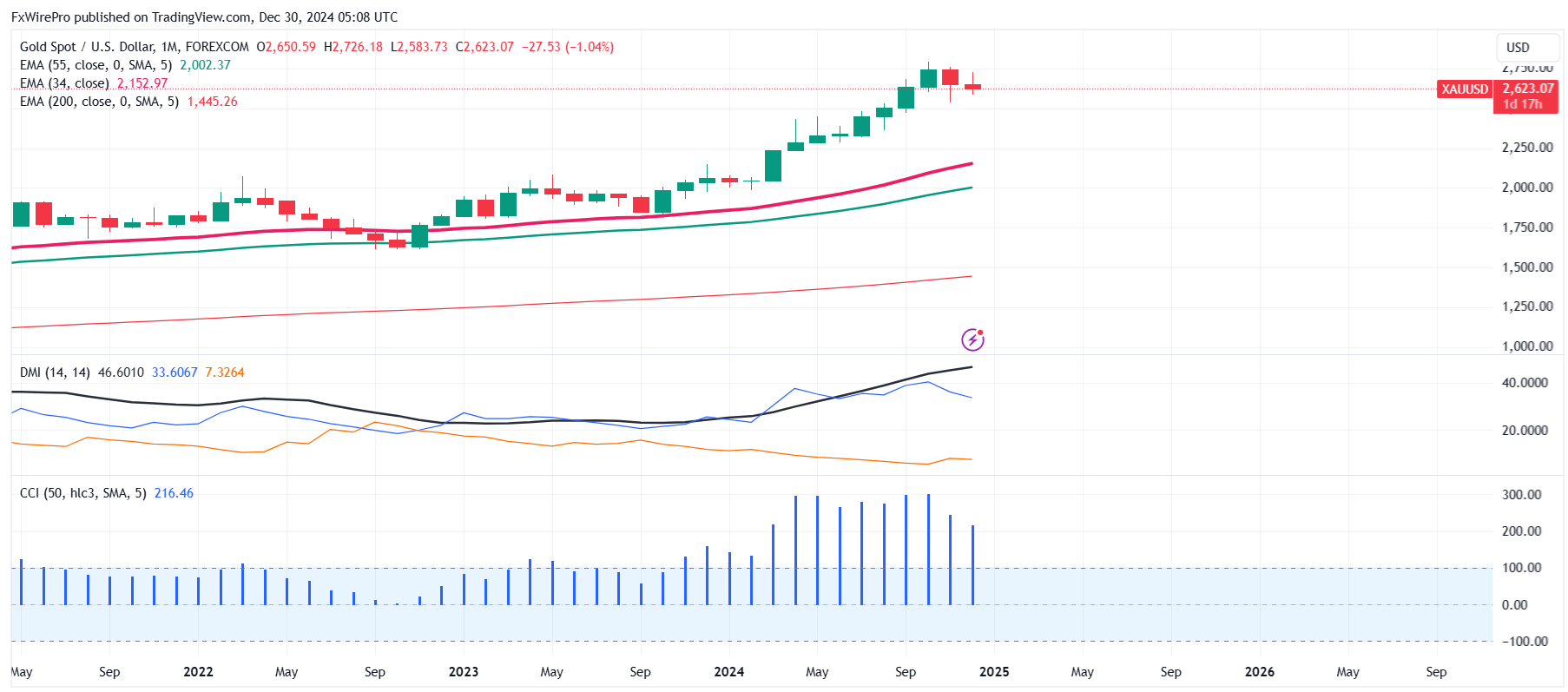Gold was one of the best-performing assets this year, surging more than 27% due to renewed geopolitical tensions and interest rate cuts by major central banks. It reached a high of $2,790 and is currently trading around $2,624.
Factors Driving Gold Prices Higher
Several factors contribute to this increase: central banks are purchasing more gold as demand for safe-haven assets rises due to ongoing geopolitical issues. Additionally, interest rate cuts from the U.S. Federal Reserve and other major banks like the ECB, BOE, and SNB have made gold more appealing, as it doesn't yield interest. Concerns about rising inflation are prompting many investors to buy gold as a hedge against increasing prices. Overall, economic uncertainty is driving investors toward gold for stability, and these trends may continue to influence the gold market through 2025.
Interest Rate Outlook
According to the CME FedWatch Tool, the probability of a Fed rate pause decreased to 89.30%, down from 91.40% a week prior.
Technical Analysis of Gold Prices
Gold prices are currently below both short-term and long-term moving averages, indicating a bearish trend. Immediate support is at $2,570, any break below will lead the yellow metal down to $2,559, $2,536, and $2,500. The near-term resistance is around $2,635, it may target higher levels of $2,670, $2,700, and $2,775.
Recommended Trading Strategy
It is good to buy on dips around $2,600, set a stop-loss at $2,570, and aim for a target price of $2,725.



 Austria’s AA Credit Rating Affirmed as Fitch Highlights Stable Outlook
Austria’s AA Credit Rating Affirmed as Fitch Highlights Stable Outlook  Asia’s IPO Market Set for Strong Growth as China and India Drive Investor Diversification
Asia’s IPO Market Set for Strong Growth as China and India Drive Investor Diversification  Bitcoin Reserves Hit 5-Year Low as $2.15B Exits Exchanges – Bulls Quietly Loading the Spring Below $100K
Bitcoin Reserves Hit 5-Year Low as $2.15B Exits Exchanges – Bulls Quietly Loading the Spring Below $100K  U.S. Black Friday Online Spending Surges to $8.6 Billion, Boosted by Mobile Shoppers
U.S. Black Friday Online Spending Surges to $8.6 Billion, Boosted by Mobile Shoppers  EUR/USD Smashes 1.1660 as ADP Jobs Massacre Crushes the Dollar
EUR/USD Smashes 1.1660 as ADP Jobs Massacre Crushes the Dollar 





























